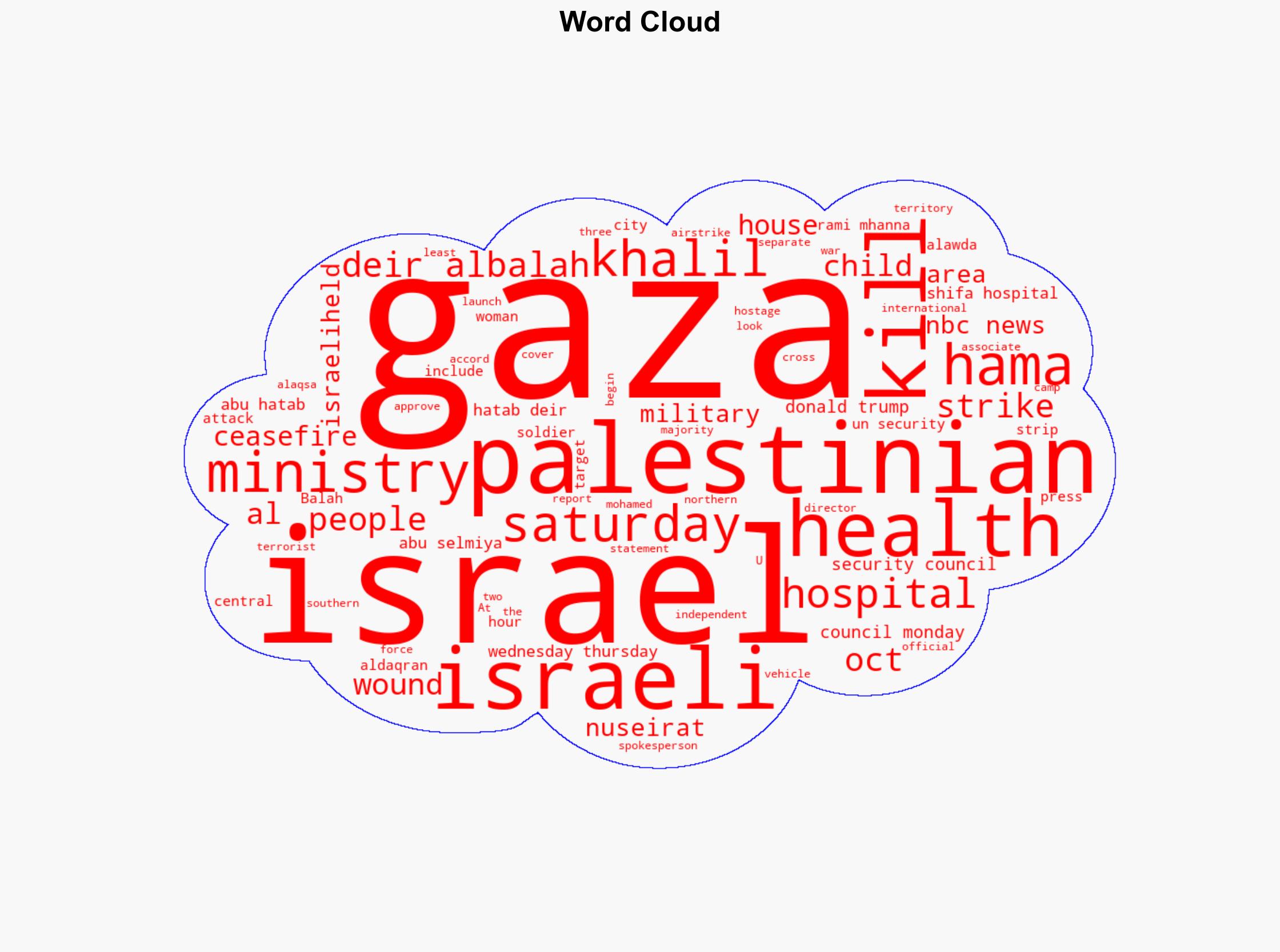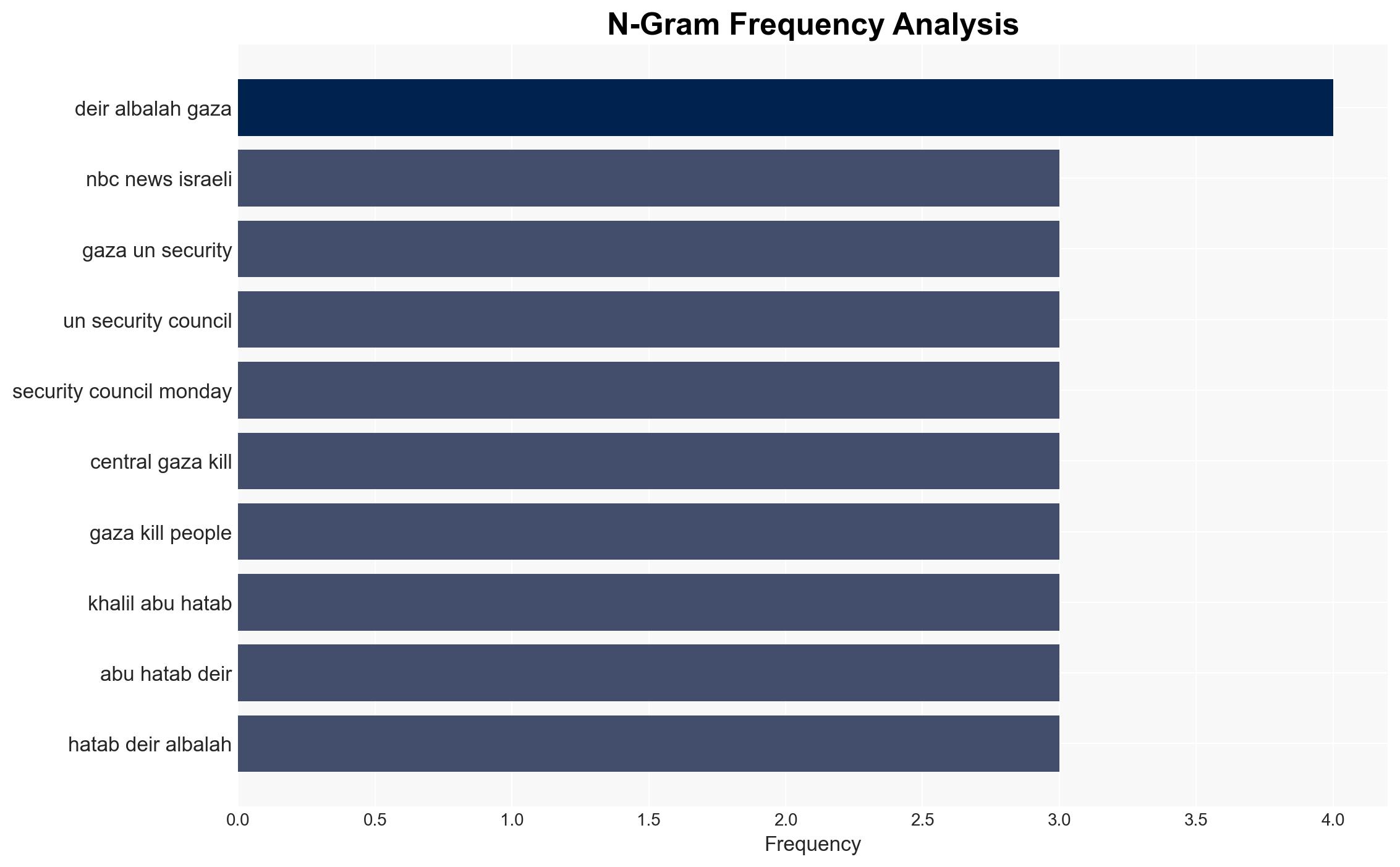Israel launches strikes in Gaza ceasefire’s latest test as hospitals say more than 20 killed
Published on: 2025-11-22
AI-powered OSINT brief from verified open sources. Automated NLP signal extraction with human verification. See our Methodology and Why WorldWideWatchers.
Intelligence Report:
1. BLUF (Bottom Line Up Front)
The most supported hypothesis is that the recent Israeli airstrikes in Gaza are a response to perceived violations of the ceasefire by Hamas, aimed at maintaining military deterrence and security. Confidence Level: Moderate. Recommended action includes diplomatic engagement to reinforce ceasefire terms and prevent further escalation.
2. Competing Hypotheses
Hypothesis 1: Israel’s airstrikes are a direct response to Hamas’s violations of the ceasefire, intended to deter further aggression and maintain security.
Hypothesis 2: The airstrikes are part of a broader strategy by Israel to undermine international efforts towards a stabilization force and transitional authority in Gaza, as proposed by the UN Security Council.
Hypothesis 1 is more likely given the immediate context of reported ceasefire violations by Hamas and Israel’s historical pattern of responding to perceived threats to its security.
3. Key Assumptions and Red Flags
Assumptions include the reliability of casualty reports from Gaza’s Ministry of Health and the accuracy of Israel’s claims of ceasefire violations. Red flags include potential bias in casualty reporting and the possibility of misinformation or propaganda from both sides. Deception indicators could involve staged incidents or exaggerated claims to manipulate international perception.
4. Implications and Strategic Risks
The continuation of hostilities poses significant risks of regional escalation, potentially drawing in neighboring countries and affecting international relations. Cyber threats may increase as both sides seek to disrupt each other’s communications and infrastructure. Economically, prolonged conflict could impact regional trade and humanitarian aid delivery. Informationally, both sides may intensify propaganda efforts to sway international opinion.
5. Recommendations and Outlook
- Engage diplomatically with both Israel and Hamas to reinforce the terms of the ceasefire and prevent further violations.
- Encourage international monitoring to ensure transparency and accountability from both parties.
- Best-case scenario: Successful diplomatic intervention leads to a reinforced ceasefire and progress towards a stabilization force.
- Worst-case scenario: Escalation into a broader regional conflict with significant civilian casualties and international involvement.
- Most-likely scenario: Continued sporadic violence with intermittent diplomatic efforts to stabilize the situation.
6. Key Individuals and Entities
Khalil al-Daqran (Ministry of Health spokesperson), Rami Mhanna (Shifa Hospital director), Mohamed Abu Selmiya (Associated Press contact), Khalil Abu Hatab (Deir al-Balah resident), UN Security Council, Israeli military, Hamas.
7. Thematic Tags
Regional Focus, Middle East, Israel, Gaza, Ceasefire, Conflict, International Relations
Structured Analytic Techniques Applied
- Causal Layered Analysis (CLA): Analyze events across surface happenings, systems, worldviews, and myths.
- Cross-Impact Simulation: Model ripple effects across neighboring states, conflicts, or economic dependencies.
- Scenario Generation: Explore divergent futures under varying assumptions to identify plausible paths.
Explore more:
Regional Focus Briefs ·
Daily Summary ·
Support us





